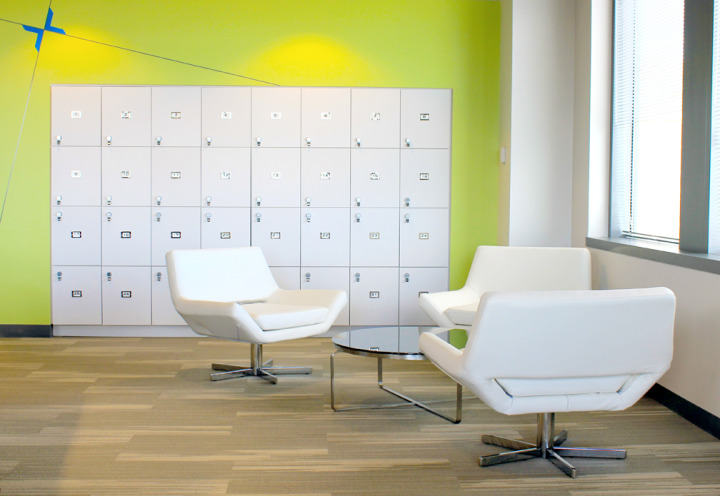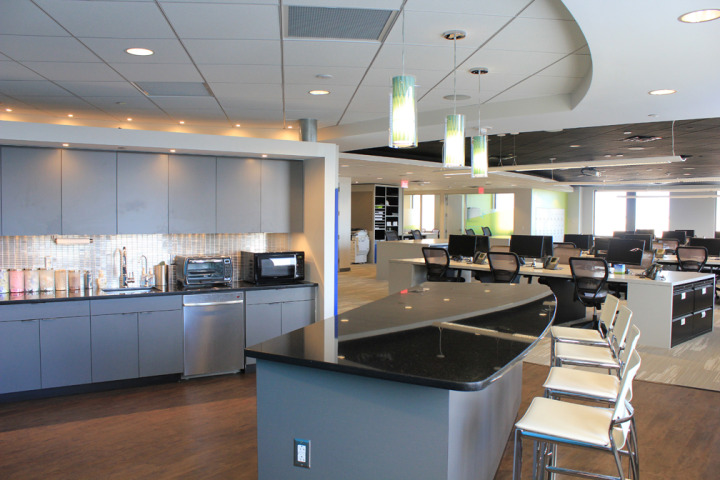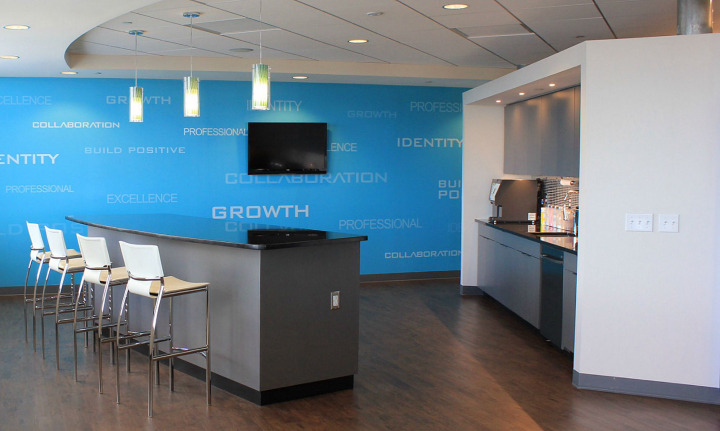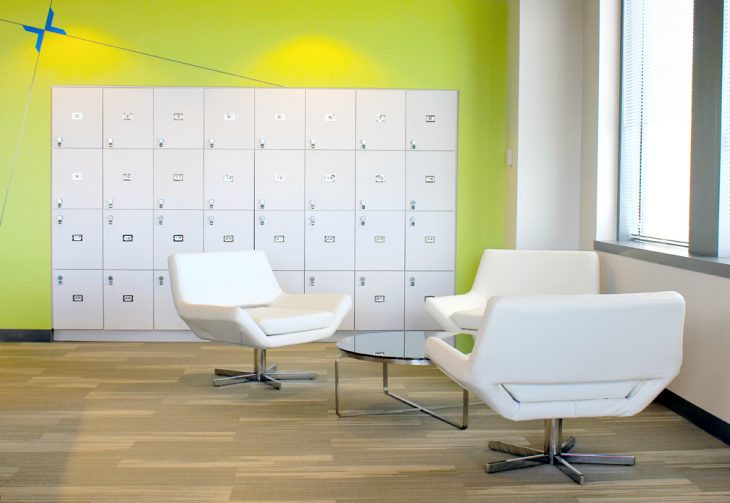A deep-dive look at how Faithful+Gould successfully implemented their workplace consulting service line in their own Washington, D.C. office. This week, in part two of our series: Tim Hannaway, Faithful+Gould’s director of program management, explains how to understand and approach business change. (Read part one here.)

Part II: Understanding and Approaching Business Change
Workplace mobility: How do you decide how much is too much or too little?
This is where the metrics come in. According to Hannaway, the question of workplace mobility is where Faithful+Gould drilled down into workplace utilization measurements.
“It’s dangerous to start by saying, ‘We’re going to reduce our footprint by 20 percent,’ but that’s an example of what we hear every day,” he said. “Maybe an organization’s optimal footprint would come from a reduction of 60 percent or maybe just 5 percent. How do you know?”
It goes back to engaging your people. “You have to look to your people and study how they actually use space,” said Hannaway. “We call it data capture. We audit the space, look at what kinds of meetings are being held, and we ask questions like, ‘Are we just using space to have a conversation?’ If that’s the case, you don’t necessarily need an eight-person conference room.”
Observe how your company and your people use existing space, and use that data to inform what you will design and how much space it should occupy.
For the Faithful+Gould Washington, D.C. office, they looked in large part at data that was already at hand. Their safety policies required entry and exit logs for all staff and visitors. Those logs revealed trends where more than 30 percent of staff were reporting to client sites or travelling on other business on a regular basis. In addition, conference rooms were always booked but with very few visitors logging in. The largest occurrence of visitors was internal staff from satellite offices.
Hannaway explained, “This dramatically shifted the vision from dedicated workspace to hot desking, from customer conference rooms to staff workrooms, from privacy to openness.”
In the end, Hannaway said that for Faithful+Gould, this process boiled down to two points:
- Observe how your company and your people use existing space, and use that data to inform what you will design and how much space it should occupy.
- Make sure you understand how your new workplace is situated with regard to local amenities and proceed accordingly, e.g., if you want to sell the idea of biking to work to your employees, make sure there are bike racks nearby. If not, plan for them yourself.

There is also behavioral prototyping. “It’s all part of the workplace mission,” he said. “If you want to have a successful workplace transformation project, you have to understand the changes you’re thinking of implementing. Start the process the day that you decide to make the change. Start implementing changes in the way you do business.”
All too often we wait to implement workplace change until the new space is complete. Again, the true workplace transformation is about the way we work and not just the place we work. Leadership at Faithful+Gould D.C. did just that.
“Well in advance of even beginning the design phase, we went agile by clearing our individual offices of all paper, office supplies and general clutter. We worked for six months in offices with bare walls, empty drawers and empty shelves. It was hard but it was what we were preparing to ask everyone to do and, in doing so, we better understood the change, better appreciated the challenges and better designed the solution,” said Hannaway.
If you’re going to go to a more open, agile workplace, it’s about increasing interpersonal engagement.
“The thing is, if you’re going to go to a more open, agile workplace, it’s about increasing interpersonal engagement,” said Hannaway. “You’ve taken down the physical barriers, but if people aren’t able to break down those barriers mentally, nothing is going to change. The modern workplace requires a whole different way of managing and engaging people,” said Hannaway.
At this point in the process, you should understand what you want to build and why, but also understand what your roles and responsibilities are in the project and in the new workplace that you’re creating.

Strategic intent based upon looking at your business through an informed Workplace Solutions filter
So here we are. You’ve engaged leadership, you’ve engaged staff, you’ve evaluated your business and now you have what Faithful+Gould refers to as an “informed workplace solutions filter.” It’s time to set the strategic intent for your project.
“At this point, it should be clear that it’s not enough to just say you plan to consolidate and downsize. By now, you should know what that means and understand what organizational changes are required to make that happen,” said Hannaway.
All too often we wait to implement workplace change until the new space is complete. The true workplace transformation is about the way we work and not just the place we work.
“Workplace transformation is a broad idea. You’ve have to get more strategic. Through all that background work you’ve done — observing, listening, engaging — that’s how you can begin to understand what the new environment is going to do for your employees and thus your organization. Once you’ve done so, you’re ready to engage in the design,” he said. This is the time when looking at workplace design portfolios and vendor options will have relevancy to your needs and not just your aesthetics.
In order to select the most appropriate design team for your project, “You have to have an informed understanding of the extent of change you will make,” said Hannaway. “The design industry is a diverse blend of exceptionally talented professionals, and whether you’re seeking a slight transformation or a complete overhaul will dramatically influence your selection of the right team.”
For more information please contact either Tim Hannaway, director of program management, by email ([email protected]) or cell (703-283-4730), or Steven Bernstein, director of workplace solutions, by email ([email protected]) or cell (609-225-0054).


